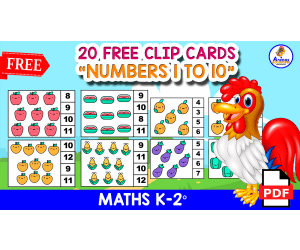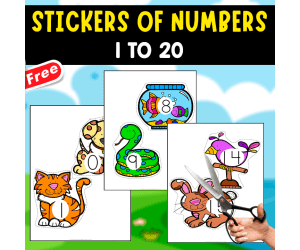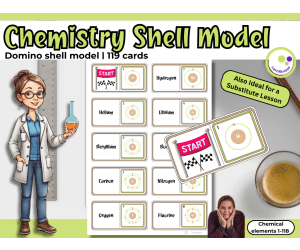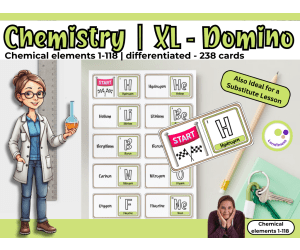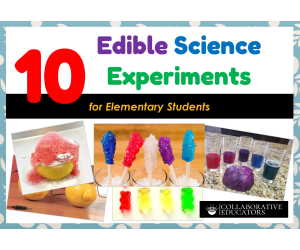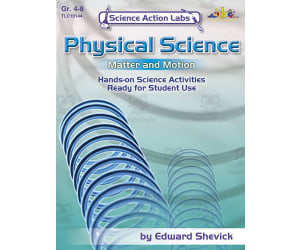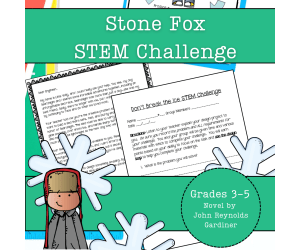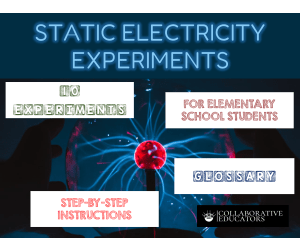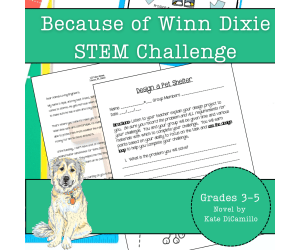2,670 products added recently
Popular Science Experiments
Engage your students with some of the most popular and exciting science experiments. This collection includes classics like volcano eruptions, balloon rockets, and density towers. By incorporating these well-loved experiments into your classroom, you can capture students' interest and make learning science an unforgettable experience.
20 FREE COUNTING CARDS | NUMBERS 1 TO 10 with FOOD
Math, Numbers, Kindergarten, Preschool, Grade 1, Worksheets & Printables, Flashcards
LET'S LEARN TO COUNT WITH THESE FABULOUS CHARTS TO EXERCISE COUNTING NUMBERS FROM 1 TO 10! So don't hesitate to download this fabulous mathematical resource now. 20 COUNTING CARDS OF THE NUMBERS FROM 1 TO 10 - Totally free so you can download it now! USE THIS DOCUMENT NOW TO TEACH YOUR CHILDREN TO COUNT NUMBERS FROM 1 TO 10 A. WE ALSO HAVE OTHER FREE RESOURCES AVAILABLE To download this resource completely free, you just have to click on the shaded link and you can use it in class! NUMBERS CLIP CARDS 1-10: https://teachsimple.com/product/20-numbers-clipcards-animal-theme DINOSAUR TRACING: https://teachsimple.com/product/alphabet-tracing-minibook-dinosaur-theme VEHICLES TRACING: https://teachsimple.com/product/10-funny-worksheets-tracing-lines TRACING SHAPES: https://teachsimple.com/product/10-tracing-worksheets-the-shapes TRACING NUMBERS: https://teachsimple.com/product/10-tracing-numbers-worksheets-numbers-1-to-10 ALPHABET TANGRAM: https://teachsimple.com/product/tangram-alphabet-abc-26-flashcards FIND THE SHADOW: https://teachsimple.com/product/find-the-shadow-5-matching-worksheets NUMBERS PYRAMIDS: https://teachsimple.com/product/numbers-pyramids-with-addition-up-to-20-20-exercises NUMBERS FLASHCARDS - APPLE THEMED: https://teachsimple.com/product/10-numbers-flashcards-apple-theme B. WHO ARE WE? We are EDITORIAL ARENAS EDUCATIVAS, a publisher dedicated to designing educational resources for primary school children approximately between the ages of 3 and 12 who are learning mathematics, literacy, as well as worksheets for learning Spanish and some brain exercises. THANK YOU FOR BEING PART OF EDITORIAL ARENAS EDUCATIVAS! C. WHAT IS THE INFORMATION REGARDING THIS PRODUCT? 1. In what area of knowledge can it be applied? Apply in the area of mathematics for children. 2. Should I apply it individually or in groups in my class? Apply individually or perhaps in groups of 2 to 3 children. 3. What size and format is this resource in? Document available in PDF format, A4 size. 4. Do I need some extra elements to apply it? Yes, you will need scissors, a laminate machine as well as hooks to place the correct answer. 5. Is it in color or black and white? Available in colors. WE ALSO HAVE OTHER RESOURCES AVAILABLE IN OUR STORE, SO TAKE A TWIST THROUGH THE STORE, THANK YOU FOR HELPING ME IN MY PROFESSIONAL DEVELOPMENT.
Author EDITORIAL LAURA EDUCA
Tags NUMBERS FLASHCARDS, Numbers Cards, Counting Cards, Clip Cards, Numbers 1 To 5
Valentine's day wordsearch
ELA, Literature, Grade 2, 3, Worksheets & Printables, Worksheets
Valentine's Day Wordsearch: An Excellent Teaching Resource Valentine's Day Wordsearch is an exceptional teaching tool, perfect for educators across public schools and homeschooling environments. It targets skills enhancement in areas such as vocabulary, spelling, and pattern recognition by creating a captivating puzzle-based learning environment. Vibrant Learning Theme for Grades 2-3 The Valentine's Day theme makes the content relatable and engaging for students in Grade 2 and Grade 3. Incorporation of ten vocabulary words associated with the theme introduces or reinforces holiday-specific terms contributing to language arts learning. Versatile Classroom Usage This versatile resource can be utilized according to classroom needs - as a warm-up task or complementary assignment post daily lessons. It fits well into whole-class sessions or small group activities. Indeed, it works brilliantly as a home assignment for homeschooling or distance-learning situations. Ease of Adaptabilty: A simpler version with one heart icon targets beginner-level students with word arrangements in backward, downward and horizontal directions. An advanced version features two heart symbols with diagonal word placements provides an extra challenge suitable for advanced learners. User-friendly Printable Design: This resource comes in an easy-to-use printable PDF format that fits effortlessly into any Language Arts lesson plan focussing on Literature study areas. Inclusive Grading System: Facilitate track of individual progress easily through included answer sheets promoting constructive feedback delivery and accelerating learner pathways. In conclusion, the Valentine’s Day Wordsearch resource delivers a balanced mixture of learning and fun as part of your teaching approach. It offers an enriching path journey centered on vocabulary and spelling enhancement.
Author Ezee 101
Tags Valentine's Day, Wordsearch, Vocabulary Skills, Spelling Skills, Language Arts
STICKERS OF NUMBERS 1-20 | PETS ANIMALS
Math, Numbers, Early Math, Early Learning, Elementary, Homeschool Resources, Not Grade Specific, Pre-K, Crafts, Activities, Games
STICKERS OF NUMBERS 1-20 | PETS ANIMALS SUMMARY OF THIS PRODUCT: What is the name of the document?: STICKERS OF NUMBERS 1-20 | PETS ANIMALS How many pages does it include?:11 In what format is it available (PDF, Word, PPT)?: PDF Is it in color or black and white?: COLOR ABOUT THE AUTHOR: At EDITORIAL ARENAS EDUCATIVAS, we specialize in designing high-quality educational materials. We want every child to discover that learning can be both entertaining and creative. I invite you to explore my educational store and discover the wide collection of resources available for your classroom or home. MAIN DESCRIPTION: What is the name of the product? Hello! Thank you so much for being interested in this beautiful and fabulous product that you can use with your children, both at school and at home. The name of this fabulous product is: STICKERS OF NUMBERS 1-20 | PETS ANIMALS How many pages does it include? This educational document, carefully created and in some cases compiled, has the following number of pages: 11 What format is it in (A4, letter, digital, printable)? This educational resource is designed in A4 format and PDF, so you will have no difficulties printing it and it will also stay well-protected. PFG Is it in black and white or in color? This document is available in black and white as well as in color. Actually, it combines both, making it more attractive for your students. COLOR SECONDARY AND COMPLEMENTARY INFORMATION: What learning area does it focus on? This and all my resources focus on children’s essential learning, such as math and literacy. Occasionally, I also create resources for Spanish. What will students learn or practice with it? With this educational resource, children will be able to practice basic skills in math and literacy. Teachers can also adapt it to other learning areas, since learning is multidisciplinary. Who will benefit the most from this resource (teachers, families, students, therapists)? I strongly believe education involves many people—teachers, parents, and even therapists. That’s why this resource is open to anyone involved in the learning process.
Author EDITORIAL LAURA EDUCA
Rating
Tags FREE, FREE RESOURCES, STICKERS, NUMBERS, EARLY MATH
Fun with Chemistry: 20 Exciting Chemical Reaction Experiments For Kids
Chemistry, Science, Elementary, Experiments, Activities
Welcome, young scientists and teachers! This eBook is full of fun and colorful experiments that show how different substances can react to create amazing effects. You will see bubbles, color changes, fizzing eruptions, and even “rockets” that zoom up into the air. As you explore these experiments, remember that science is all about asking questions, observing closely, and having fun learning about the world around us. There are 20 exciting chemistry experiments included. They all involve simple chemical reactions that can be safely performed by kids. For each experiment, the materials are listed, and the step-by-step procedure. Finally, an explanation is given, so as to highlight the science behind the experiment. Last but not least: All experiments must be conducted under strict adult supervision. Always wear safety goggles (or ask an adult to help you wear them) and use the experiments in a safe area where spills can be easily cleaned up.
Author Bright Classroom Ideas Marketplace
Tags Chemistry, Experiment, Kids, Lab, Reaction
Atomic Shell Model Domino – Learning Electron Configurations Play
STEM, Science, Chemistry, Physics, Life Sciences, Montessori, Basic Science, Grade 7, 8, 9, 10, 11, 12, Activities, Games, Worksheets & Printables, Task Cards, Quizzes and Tests, Teacher Tools, Word Problems, Flashcards, Escape Room, Experiments
Atomic Shell Model Domino – Learning Electron Configurations Through Play 118 cards for learning the periodic table A classroom game to practice atomic structure and element knowledge 🧪🎲 This printable domino game helps students explore the shell model of the atom while getting to know the periodic table in a more hands-on and interactive way. Each card connects an element name to a visual of its electron shell configuration, offering a playful way to reinforce key chemistry concepts. The set includes 119 domino-style cards – covering all 118 known elements. On each card, the element name is on the left and the corresponding shell diagram with its symbol is on the right. Students link them by matching the shell model of one element to the name of the next. It’s a surprisingly effective way to help them recognize patterns in atomic structure, get familiar with chemical symbols, and connect abstract content to something more tangible. What’s included: 119 printable domino cards (PDF) Each card shows: element name → electron shell model with element symbol Print-ready format; laminating optional but recommended Classroom ideas: Use as a full-class activity or in small groups Introduce the game before formal work with the periodic table to build foundational understanding Great for movement-based tasks: spread the cards across tables or even down a hallway Set time challenges: Who can build the longest correct domino chain? For easier levels, use a reduced set (e.g., first 20 elements or just the main groups) In my chemistry classes, students enjoy the game format – especially those who don’t usually connect with abstract models. Working together to build the correct sequence gives them a chance to talk through the structure of atoms and test their understanding in a low-pressure setting. The domino format encourages active learning, peer interaction, and multiple ways to differentiate by level. Whether you use the full set or simplify it for younger learners, it’s a great way to bring more movement and discussion into your science lessons. Just print, cut, and you’re ready to play. 📍 Best wishes, Heike from @Lernfitness Did You Know? I teach with a certified therapy dog, and together we create a positive and welcoming learning environment. 🐶
Author Lernfitness
Rating
Tags Educational Card Games, Chemistry, Physics, STEM Science Matching Game, Chemical Elements, Periodic Table Matching Game, Shell Model, Game, Domino
XL Domino – Chemical Elements 1–118 | exploring element names + symbol
STEM, Science, Chemistry, Physics, Life Sciences, Montessori, Basic Science, Grade 7, 8, 9, 10, 11, 12, Activities, Games, Worksheets & Printables, Task Cards, Quizzes and Tests, Teacher Tools, Word Problems, Flashcards, Escape Room, Experiments
XL Domino – Chemical Elements 1–118 An interactive domino game for exploring element names and symbols 🧪🎲 This printable XL domino game offers a fun and flexible way for students to practice the names and symbols of all 118 chemical elements. Designed for use in grades 7–10, this resource supports both introductory lessons and ongoing review in chemistry class. Whether used in small groups, as a full-class activity, or even spread out along the hallway floor, it encourages active learning and collaboration. Each card features either the name or the symbol of a chemical element. By matching these correctly, students build a long domino chain – all while reinforcing their knowledge of atomic numbers, symbols, and the layout of the periodic table. What’s included: 238 printable domino cards (PDF format) Two complete versions of the game (119 cards each): – Beginner version: element names on both sides – Advanced version: name on one side, symbol on the other Covers all elements from hydrogen (1) to oganesson (118) Tips for setup and gameplay included How I’ve used it: This game works well before introducing the periodic table in depth. It gives students time to get comfortable with element names and symbols in a low-pressure setting. The larger card format makes it ideal for group work or movement-based activities, such as arranging the cards on the floor or in the hallway. Why it works: The visual repetition and active gameplay help students internalize key facts more effectively than passive memorization. Group dynamics also support peer learning – students naturally help each other recall unfamiliar elements. And because it feels like a game, students stay engaged longer and show more willingness to participate. The material is easy to prepare: print, laminate if you like, and cut out the cards. From there, you can adapt it for differentiated learning levels or turn it into a competitive classroom challenge. This is not just a game – it’s a versatile teaching tool that brings the periodic table to life. 📍 Best wishes, Heike from @Lernfitness Did You Know? I teach with a certified therapy dog, and together we create a positive and welcoming learning environment. 🐶
Author Lernfitness
Rating
Tags Educational Card Games, Chemistry, Physics, STEM Science Matching Game, Chemical Elements, Periodic Table Matching Game, Game, Domino, Differentiation
Biology Binder Covers – Templates for Classroom Use
Life Sciences, Science, STEM, Basic Science, Special Resources, Montessori, Classroom Management, Resources for Teachers, Biology, Human Body, Homeschool Templates, Grade 7, 8, 9, 10, 11, 12, Worksheets, Worksheets & Printables, Teacher Tools, Projects, Activities, Workbooks, Drawing Templates & Outlines, Templates, Graphic Organizers, Experiments
Biology Binder Covers – Templates for Classroom Use Organize your biology handouts, notes, and units with visual clarity Simple and flexible templates to help organize your biology materials In my biology classes, it can be a challenge to keep things organized - especially when it comes to multiple units, lab notes, worksheets and review materials. To make it easier for my students and myself, I designed these simple binder sleeves. There are 12 different pages. The covers have a clean, colorful blob layout that is friendly but not distracting. I usually print them out and use them as cover sheets or as dividers in folders for students or teachers. They also work well for digital learning environments, e.g. as section covers in PDF files or on classroom platforms. I like that the color scheme allows students to quickly find what they are looking for, and it brings a little more structure to a subject that is often riddled with formulas and technical terms. When used as cover sheets, students can choose their favorite color for their cover sheet. This resource is handy - and has saved me a lot of time in lesson preparation and follow-up. What’s included: 12 biology-themed cover pages different colors zu choose as a cover sheet as a divider between the individual biology topics I've printed these on colored paper for my own binder and also used them digitally in student notebooks. Works well for both teacher organization and student-facing materials. 📍 Best wishes, Heike from Lernfitness Biology teacher (Chemistry teacher, Math teacher) in Germany Did You Know? I teach with a certified therapy dog, and together we create a positive and inspiring learning environment. 🐶✨
Author Lernfitness
Rating
Tags Science, Biology, STEM, Binder, Cover Sheet, Template, Organizer, Organize, GoodNotes, PDF
10 Edible Science Experiments for Elementary Students
Chemistry, Science, Grade 1, 2, 3, 4, 5, Labs, Experiments, Activities
Prepare yourselves for some incredibly entertaining science! "Edible Science Experiments for Elementary Explorers," this book, is your pass to a delicious journey. Do you wish to witness a rainbow that is (almost) edible? We have it. Consider creating enormous gummy bears. Simple as pie. You can even produce real butter and shake cream. That's cool, isn't it? There are ten incredible experiments within. You can find items in your kitchen for each one. The steps are quite easy. We give you detailed instructions. And you know what? The majority of the outcomes are yours to keep! You'll learn cool stuff too. Like why some liquids float and others sink. Or how mixing things can make bubbles. Science doesn't have to be boring. This book proves it! So grab your grown-up, put on your apron, and let's get started. You'll be a science whiz in no time. And you'll have some tasty treats along the way. It's science you can taste! Let the edible experiments begin!
Author Bright Classroom Ideas Marketplace
Rating
Tags Science, Chemistry, Lab, Elementary, Experiment
Science Action Labs Insects: Hands-On Science Activities Ready for Student Use
Science, Life Sciences, Insects, Grade 1, 2, 3, Labs, Experiments, Activities
Science Action Labs Insects: Hands-On Science Activities Ready for Student Use This interactive science activity kit offers a riveting method of teaching elementary students, specifically those in grades 1 through 3, about the fascinating world of insects. This comprehensive resource unravels various aspects about different insects and their life cycles under a simple yet informative light. Dynamic Learning Experience The unique experience integrates demonstrations and experiments into lessons. Activites include: Writing poetry about bugs Holding grasshopper jumping contests Constructing honeycombs from scratch Guide characters C.D., Allie, and Orbit are presented throughout for systematic knowledge acquisition that renders comprehension easier for young learners. A Teacher-Friendly Resource with Different Implementations This rich-resource comes packed with 64 printable pages tailored to beginner scientists' needs. It's an excellent tool for educators introducing insects at primary grade level either through individual study or group studies within classrooms. The buzzing environment at our feet opens up wonders beyond any storybook ever could relay about mother nature's intricate designs. Truly, the learning journey into the insect kingdom ties closely with fun for enhanced learner engagement together with Science Action Labs Insects teachings on these vital players in nature's ecological dance.</p
Author Classroom Complete Press
Tags Science Action Lab, Insects, Hands-on, Science Activities
Science Action Labs Physical Science: Matter and Motion
Science, Physics, Grade 4, 5, 6, 7, 8, Labs, Experiments, Activities
Science Action Labs Physical Science: Matter and Motion An essential teaching resource designed for educators of Grade 4 to Grade 8 students with a primary focus on Newton's First Law of Motion. This versatile science guide forms the foundation for a range of engaging activities. Lessons grounded in physical science, revolving around essentials such as matter and motion. Characteristics of matter, friction integration and understanding concept made effortless with this pragmatic resource. Actionable Labs The many engaging projects include: Building simple pendulums. Creating miniature scenarios to demonstrate overcoming friction. The activities introduce novel methods to explore conventional concepts through active learning. This affluence in implementation strategies meets varying teaching needs from whole group instruction to individual assignments based on the class or student requirements. Ease of Use The constructively organized PDF entails: A ready-to-print format containing 64 straightforward pages - easing preparation time with well-designed activities available at your fingertips! To summarize,, "Science Action Labs : Physical Science - Matter And Motion" strikes an effective balance between theory and practice cultivating an active learning environment for conceptual mastery via real-world application focused hands-on activities.
Author Classroom Complete Press
Tags Hands-on Science, Edible Atoms, Mousetrap Science, Momentum Challenge, Inertia
Stone Fox STEM Experiment + STEM Project for Grades 3, 4, 5
Science, Technology, Engineering, STEM, Grade 3, 4, 5, Experiments, Activities, Projects, Diagrams, Teacher Tools, Graphic Organizers, Rubrics
Little Willy is looking for a way to build a sled that will honor Searchlight, in this STEM project inspired by Stone Fox. This science project encourages problem-solving as students plan and construct a sled that will be able to carry Willy safely across a block of ice. Perfect for blending literature with science, it allows students to explore engineering concepts using simple supplies while promoting teamwork and critical thinking. What’s Inside This Resource: Student Letter: A heartfelt letter from Little Willy introduces the challenge, linking the story to a real-world engineering task. Design Loop Graphic: A visual students can attach to their science journals, serving as a step-by-step guide throughout the activity. Detailed Instructions: Choose to print the guide as a packet or have students record each stage in their journals for an interactive experience. Teacher Tips: Practical guidance for crafting a clear problem statement with time constraints, materials, and success criteria tailored to your classroom. Skills Your Students Will Build: ✔ Problem-Solving: Identify obstacles and create inventive solutions. ✔ Engineering Design: Navigate the design loop—plan, construct, test, and refine. This page can easily be enlarged for a classroom poster. ✔ Critical Thinking: Assess their prototype’s performance and pinpoint ways to enhance it. ✔ Teamwork: Collaborate effectively to accomplish shared goals. Versatile Classroom Application: Whether as guided instruction or part of an integrated literature and science unit, this STEM science project encourages students to think creatively, document their process, and meet science and engineering standards. The rubric included is based on engineering concepts, but can also be used as a nonfiction writing rubric for cross-curricular options. Why Educators Love This Resource: ⭐ “My students were fully engaged, combining their passion for reading with STEM!” ⭐ “Simple to set up and encourages creativity and teamwork.” ⭐ “A seamless connection between literature and science for cross-curricular learning!” Encourage your students to help Little Willy achieve his goals and experience the excitement of engineering with this standards-aligned STEM adventure!
Author Kel's Klass
Tags 4th Grade Science Project, 4th Grade Science Experiment, 5th Grade Science Project, 5th Grade Science Experiment, Engineering Diagram, Science Graphic Organizer, Science Rubric, 3rd Grade Science Project, 3rd Grade Science Experiment, Stone Fox
Static Electricity Experiments for Elementary School
Physics, Science, Grade 1, 2, 3, 4, 5, Labs, Experiments, Activities
What is electrostatics, or static electricity? The buildup of electric charge on an object's surface is called static electricity, or electrostatics. This charge, which can be either positive or negative, is produced when a material's atoms acquire or lose electrons. When two objects rub against one another, electrons are transferred from one to the other, creating this static energy. As a result, one of the materials has a negative charge due to an excess of electrons, while the other material has a positive charge due to a lack of electrons. The feeling of a tiny electric shock after stepping on a rug and then contacting a metal surface is a typical example. Ten extremely basic and doable experiments that use or create static electricity are included in this useful e-book. Every experiment is safe and may be carried out using normal, commonplace items. Every experiment has comprehensive, step-by-step instructions. Lastly, each experiment is given a brief explanation so that elementary school pupils can understand it. Have fun exploring the marvels of static electricity through experimentation!
Author Bright Classroom Ideas Marketplace
Rating
Tags Static, Electricity, Experiment, Elementary, Science, Physics
Because of Winn Dixie STEM Experiment + STEM Project for Grades 3-5
Science, Technology, Engineering, STEM, Grade 3, 4, 5, Experiments, Activities, Projects, Diagrams, Teacher Tools, Graphic Organizers, Rubrics
Engage your students in a hands-on STEM challenge inspired by Because of Winn-Dixie! This exciting activity combines engineering, creativity, and problem-solving as students design and build a pet-friendly shelter for Winn-Dixie, the lovable dog who’s afraid of storms. Perfect for blending literature with science, this challenge encourages young minds to apply engineering principles using simple materials, all while developing teamwork, critical thinking, and innovation. What’s Included in This Resource: Student Letter: An engaging letter from Opal invites students to participate in the challenge, drawing a direct connection between the story’s problem and the real-world task. The Design Loop Visual: This visual aid is a great tool for students to glue into their science journals for easy reference. It can easily be enlarged as a classroom poster. Step-by-Step Directions: Detailed instructions that can be printed or written into science journals for a hands-on approach. These directions ensure that students stay on track while working through each part of the challenge. Teacher Notes: Helpful guidance to assist you in creating a clear problem statement, establishing success criteria, and setting time limits and materials. Tailor these instructions to fit your classroom’s needs. Key Skills Developed: ✔ Problem-Solving: Encourage students to identify challenges and develop creative, effective solutions. ✔ Engineering Design: Teach the design process by having students follow the design loop to plan, construct, test, and refine their pet shelters. (Discussing area and perimeter will enhance this design specifically.) ✔ Critical Thinking: Help students evaluate their designs, analyze their prototypes, and identify ways to improve them. ✔ Collaboration: Foster teamwork as students collaborate to achieve a common goal. Flexible Classroom Use: This STEM challenge is perfect for guided instruction or as part of a broader literature and science unit. It provides an opportunity for students to connect their love of reading with real-world applications, improving both their scientific knowledge and creative abilities. Why Teachers Love It: ⭐ “My students were so engaged! It brought their love for reading into STEM learning.” ⭐ “This activity is simple to set up and promotes creativity and teamwork.” ⭐ “The combination of literature and science created an ideal cross-curricular experience for my class.” Inspire your students to help Winn-Dixie solve his stormy dilemma and ignite their passion for engineering with this fun, standards-aligned STEM challenge!
Author Kel's Klass
Tags 4th Grade Science Project, 4th Grade Science Experiment, 5th Grade Science Project, 5th Grade Science Experiment, Engineering Diagram, Science Graphic Organizer, Science Rubric, Because Of Winn Dixie, 3rd Grade Science Project, 3rd Grade Science Experiment
Proteins and Nucleic Acids – Lab Station Activity
Science, Chemistry, Grade 7, 8, 9, 10, Labs, Experiments, Activities
Proteins and Nucleic Acids - Lab Station Activity An interactive resource for Grade 7-10 teachers enabling students to dive deep into the world of Thermoregulation. Extremely engaging with several elements: Drawing or building challenges. Online research questions. Space for expressing opinion writings on temperature regulation topics. Inclusive rest stations inbetween tasks. Note: These activities are designed so that they stimulate higher-order thinking, linking academic concepts with real-life applications. Assessment Components The lab activity also includes targeted assessments such as: Multiple Choice Questions: Providing thoughtful explanations behind their chosen solutions. Mastership Task: A station where they create two multiple-choice questions from true/false categories and a short answer query inclusive of supplying accurate answers as well. The entire lab activity is seamless for instructors; printing cards and scattering them around the learning space is all it takes. A supplied answer key adds convenience during assessment phases. Bonus Activities! To keep the engagement lively, this resource offers bonus games like a word scramble puzzle and a word search game ensuring no room for idle intervals among learners. Fruitful Knowledge Outcomes & Future Topics The resource is dedicated towards achieving solid understanding about Thermoregulation processes in living organisms while future planned topics cover broader scientific concepts including: Caveat: - Exploring Carbohydrates & Lipids. - Understanding Enzymes & Metabolism. - And many other topics spanning Ecosystems till Chemical Reactions under Chemistry realm. The Proteins and Nucleic Acids - Lab Station Activity , a teacher’s delight for enriching student's learning journey in the field of science.
Author Teach With Fergy
Tags Thermoregulation, Ectotherms, Endotherms, Metabolic Responses, Assessments
Science Action Labs Electricity & Magnetism
Science, Physics, Grade 4, 5, 6, 7, 8, Labs, Experiments, Activities
Science Action Labs Electricity & Magnetism A comprehensive teaching resource tailor-made for educators working with 4th to 8th grade students. This resource transmutes theoretical knowledge of electricity and magnetism into hands-on experiences. Contents The teaching toolkit contains: 64 ready-to-print pages: Neatly organized in a single PDF format. Detailed experiments : Students will construct an electroscope, generate their own electricity, put various magnets to test, evaluate magnetic potency and much more. Educational Value Theoretical and practical components balanced: This makes it an excellent tool for cultivating scientific curiosity among young learners while strengthening their understanding about electricity and magnetism. Can be used flexibly in various scenarios to meet specific pedagogical needs whether opted for group work or individual assignments; in-class activities or as homework supplements. Promotes physics literacy: Hands-on nature of the activities engages learners directly in scientific exploration. Cultivate future scientists by demystifying complex theories through first-hand experiences! Harnessing such stimulating resources contributes significantly towards building solid foundations today which will help them understand Physics' intricate wonders tomorrow.
Author Classroom Complete Press
Tags Science Labs, Electricity, Magnetism, Electromagnet Lab, Building An Electroscope
Tiger Rising STEM Experiment + STEM Project for Grades 4, 5, 6
Science, Technology, Engineering, STEM, Grade 4, 5, 6, Experiments, Activities, Projects, Diagrams, Teacher Tools, Graphic Organizers, Rubrics
This hands-on activity combines creativity and problem-solving as students design and build a tower for the safety of the tiger in the novel, Tiger Rising. Perfect for integrating literature and science, this challenge encourages students to apply engineering principles using simple materials while fostering teamwork and critical thinking. What’s Inside This Resource: Student Letter: A letter from Rob Horton introduces the challenge, linking the story to a real-world engineering task. Design Loop Graphic: A visual students can attach to their science journals, serving as a step-by-step guide throughout the activity. Detailed Instructions: Choose to print the guide as a packet or have students record each stage in their journals for an interactive experience. Teacher Tips: Practical guidance for crafting a clear problem statement with time constraints, materials, and success criteria tailored to your classroom. Skills Your Students Will Build: ✔ Problem-Solving: Identify obstacles and create inventive solutions. ✔ Engineering Design: Navigate the design loop—plan, construct, test, and refine. This page can easily be enlarged for a classroom poster. ✔ Critical Thinking: Assess their prototype’s performance and pinpoint ways to enhance it. ✔ Teamwork: Collaborate effectively to accomplish shared goals. Versatile Classroom Application: Whether as guided instruction or part of an integrated literature and science unit, this STEM activity encourages students to think creatively, document their process, and meet science and engineering standards. The rubric included is based on engineering concepts, but can also be used as a nonfiction writing rubric for cross-curricular options. Why Educators Love This Resource: ⭐ “My students were fully engaged, combining their passion for reading with STEM!” ⭐ “Simple to set up and encourages creativity and teamwork.” ⭐ “A seamless connection between literature and science for cross-curricular learning!” Encourage your students to provide a safe haven for the tiger (and Rob and Sistine?) and experience the excitement of engineering with this standards-aligned STEM adventure!
Author Kel's Klass
Tags 4th Grade Science Project, 4th Grade Science Experiment, 5th Grade Science Project, 5th Grade Science Experiment, 6th Grade Science Project, 6th Grade Science Experiment, Engineering Diagram, Science Graphic Organizer, Science Rubric, Tiger Rising
Types of Bonds – Lab Station Activity
Science, Chemistry, Grade 9, 10, 11, 12, Labs, Experiments, Activities
Types of Bonds – Lab Station Activity Types of Bonds – Lab Station Activity is a dynamic learning resource designed for educators teaching Grades 9 to 12 Chemistry. It offers an engaging approach to educating students about various types of bonds through hands-on exploration and active participation. About The Activity Rather than standard one-dimensional lessons, this activity prompts students to move around the room, visiting different stations. Each station provides a unique method for understanding the topic. These methods include: Drawing or constructing models, Researching specific questions related to electricity production sources, Forming opinions on pertinent issues and expressing them in writing, Reading articles that link theory with real-world applications, and Finding answers through multiple-choice questions. The main aspects considered during this activity encompass these eight critical themes: Reweable Sources; Non-renewable Sources; Fossil Fuels; Nuclear Power; Solar Power; ;nd; > fully chosen tongetsumontextualize whatuir Learing in a tangible manner ensures no student energy is wasted but continually augmented. Conclusion Therefore,, integrate Type of Bonds – Lab Statio Activity iy your eaching, tt’sthan efrectve nedhod o addressing scientific facts about bonds with a kyeyemphasis on independent thinking creative exploration and collaborative learning.
Author Teach With Fergy
Tags Bonds, Chemistry, Lab Activity, Renewable Sources, Energy Production
Electricity Generation – Lab Station Activity
Science, Technology, Engineering, Grade 7, 8, 9, 10, Labs, Experiments, Activities
Educators seeking an engaging, hands-on resource to teach the principles of electricity generation will find the Electricity Generation - Lab Station Activity to be an invaluable teaching tool. This product is a fully editable lab station activity designed to actively engage students in learning about electricity production. This robust product offers seven distinct lab stations with unique and engaging activities. Students have opportunities at each station to test their understanding of different methods of electricity production—such as renewable and non-renewable sources, fossil fuels, nuclear power, wind energy, hydroelectric power and future technologies in interactive ways. The resource includes practically no-prep for educators - just print the cards and lay them out around the classroom! Bonus activities: An added advantage is bonus activities such as word scrambles and word searches related to the topic. These orchestrated interjections ensure there is no idle time between transitioning from one action-packed station activity to another! The toolkit can be used during laboratory sessions or serves well for review tasks prior tests or quizzes. This resource also promotes independent thinking skills by requiring students to research specific aspects relating to electricity generation on their own devices or a classroom computer at 'research' stations. It encourages expression as students write down opinions on questions surrounding how electricity gets produced. Designed for multi-modal learners from 7th-10th grade studying science with subtopics in engineering; this package can also be sent home as extensions/homework tasks after lessons end. Overall teachers will appreciate how effortlessly it blends learning assessment while ensuring student engagement! Note: An answer key is provided where applicable so educators can quickly and accurately grade student work and offer feedback on their learning progress. In summary, this unique collection of station activities facilitates a complete immersion into understanding electricity generation while ensuring students remain stimulated and engaged throughout their exploration. As they navigate through each station activity – either in small groups or individually – students strengthen their grasp over the subject matter.
Author Teach With Fergy
Tags Electricity Generation, Lab Station, Hands-on Learning, Renewable Energy, STEM Education
Plate Tectonics – Lab Station Activity
Science, Earth and Environmental Sciences, Environmental Science, Grade 7, 8, 9, 10, Labs, Experiments, Activities
Plate Tectonics Lab Station Activity engages students through hands-on learning. This editable high school earth science resource teaches key concepts like tectonic plates, plate boundaries, earthquakes, major plates, seafloor spreading, and more. Students rotate through 9 stations, including: drawing models, conducting research, writing opinions, reading applicability passages, answering comprehension questions, watching expert video clips, creating their own multiple choice questions, and catching up on previous work. Bonus vocabulary puzzles ensure continued engagement. This activity works for whole group, small group, or independent work. The no-prep format means simply print, set up, and implement.
Author Teach With Fergy
Tags Earth, Plates, Continental, Earthquakes, Lab Station, Plate Tectonics Lab Worksheet Answer Key, Plate Tectonics Hands On Activity, Plate Tectonics Lab Answer Key, Hands-on Plate Tectonics Activities, Plate Tectonics Activity, Plate Tectonics Lab Answers, Plate Tectonics Activity Answer Key
Pure Substances and Mixtures – Lab Station Activity
Science, Chemistry, Grade 7, 8, 9, 10, Labs, Experiments, Activities
Pure Substances and Mixtures – Lab Station Activity A comprehensive, flexible teaching resource brimming with educational benefits for educators in middle schools and high schools. A definitive tool that sparks creativity while teaching students about key chemistry concepts of pure substances and mixtures. Key Topics Covered: Homogeneous mixtures Heterogeneous mixtures Centrifuge functions Solutions - Unsaturated, Saturated, Supersaturated Intriguing fact-checking multiple-choice questions have been included to assess student's proficiency in these topics. Main Features: Diverse Set of Activities: Each station provides a unique learning experience for the students from hands-on activities to research tasks. Variety of Learning Modes: A composition enabling independent work or collaborative group projects. Digital Integration: Incorporated are digital stations where learners research specific subject areas or view informative video clips. The Accessibility Advantage: All required materials have been made available online making this tool readily accessible for teachers. Add-ons: Fun word games like scramble and other activities are also included as bonus features. Can be used as part grade assessments or optional supplemental material that helps maintain student engagement during transitions between lab activities. A Comprehensive Solution: The Pure Substances and Mixtures – Lab Station Activity presents an innovative approach to chemistry education appropriate for grades 7-10. Easy-to-use, fully editable and adaptable based on teacher preferences, it seamlessly fits any learning environment.
Author Teach With Fergy
Tags Pure Substances, Mixtures, Lab Stations, Chemistry Education, Hands-on Activities, Pure Substances And Mixtures Worksheets
Dear Mr. Henshaw STEM Experiment + STEM Project for Grades 3, 4, 5
Science, Technology, Engineering, STEM, Grade 3, 4, 5, Experiments, Activities, Projects, Diagrams, Teacher Tools, Graphic Organizers, Rubrics
Leigh Botts from Dear Mr. Henshaw needs your help! This STEM project encourages problem-solving as students plan and construct a device that will help protect Leigh's lunch from a sneaky thief. Perfect for blending literature with science, it allows students to explore engineering concepts using simple supplies while promoting teamwork and critical thinking. What’s Inside This Resource: Student Letter: A pleading letter from Leigh introduces the challenge, linking the story to a real-world engineering task. Design Loop Graphic: A visual students can attach to their science journals, serving as a step-by-step guide throughout the activity. Detailed Instructions: Choose to print the guide as a packet or have students record each stage in their journals for an interactive experience. Teacher Tips: Practical guidance for crafting a clear problem statement with time constraints, materials, and success criteria tailored to your classroom. Skills Your Students Will Build: ✔ Problem-Solving: Identify obstacles and create inventive solutions. ✔ Engineering Design: Navigate the design loop—plan, construct, test, and refine. This page can easily be enlarged for a classroom poster. ✔ Critical Thinking: Assess their prototype’s performance and pinpoint ways to enhance it. ✔ Teamwork: Collaborate effectively to accomplish shared goals. Versatile Classroom Application: Whether as guided instruction or part of an integrated literature and science unit, this STEM activity encourages students to think creatively, document their process, and meet science and engineering standards. The rubric included is based on engineering concepts, but can also be used as a nonfiction writing rubric for cross-curricular options. Why Educators Love This Resource: ⭐ “My students were fully engaged, combining their passion for reading with STEM!” ⭐ “Simple to set up and encourages creativity and teamwork.” ⭐ “A seamless connection between literature and science for cross-curricular learning!” Encourage your students to solve Leigh’s challenge and experience the excitement of engineering with this standards-aligned STEM adventure!
Author Kel's Klass
Tags 4th Grade Science Project, 4th Grade Science Experiment, 5th Grade Science Project, 5th Grade Science Experiment, Engineering Diagram, Science Graphic Organizer, Science Rubric, 3rd Grade Science Project, 3rd Grade Science Experiment, Dear Mr. Henshaw
Fossils and Geologic Time – Lab Station Activity
Science, Earth and Environmental Sciences, Grade 8, 9, 10, 11, 12, Labs, Experiments, Activities
Fossils and the Geologic Time Scale - Lab Station Activity Bring the fossil record to life in your middle or high school science classroom with this engaging lab activity. Students will rotate through 9 stations to analyze fossils, date rocks, explore timescales, and more. The self-guided format allows them to work at their own pace while answering questions, watching videos, doing research, and getting creative. Topics span fossilization, radiometric dating, rock strata, the La Brea Tar Pits, and major boundaries in Earth's history. This customizable resource includes reading passages, comprehension questions, creative prompts, and bonus vocabulary builders to maximize the learning potential. Students will love moving freely around the classroom as they dive into hands-on archaeology.
Author Teach With Fergy
Tags Fossils, Fossilization, Rock, Strata, Lab Station, Photosynthesis And Cellular Respiration Word Search Answer Key, Geological Timeline Activity Answer Key, Geologic Time Word Search Answer Key, Geologic Time Activity, Geologic Time Scale Activity Middle School, Geologic Time Scale Activity High School, Geologic Time Line Activity
10 Plant Experiments for Elementary School
Nature & Plants, Life Sciences, Science, Grade 3, 4, 5, Labs, Experiments, Activities
These ten easy and entertaining plant experiments make science come to life. Students test the effects of soil, water, and light on plant growth in small groups. They observe how plants bend toward light, watch seeds grow, and watch celery drink colored water. Easy-to-find supplies and precise, detailed instructions are used in each experiment. The lesson teaches practical science skills like forecasting, observing, and documenting data while fostering curiosity and teamwork. Students can ponder, write, and reflect on what they observe with the help of the associated worksheet. To keep every student interested and involved, teachers can set up alternating experiment stations. The worksheet concludes with the answers. Although it can be modified for younger or older students, this curriculum is ideal for Grades 4-5. It links classroom instruction to nature and promotes experiential learning. This ready-to-use, low-prep lesson will add interest to your science class and allow your children to experiment, discover, and develop a love of plants!
Author Bright Classroom Ideas Marketplace
Rating
Tags Plant, Experiment, Lab, Biology, Botany, Elementary, Grade 4, Grade 5
Liquids and Gases – Lab Station Activity
Science, Physics, Grade 6, 7, 8, 9, Labs, Experiments, Activities
Liquids and Gases – Lab Station Activity is a valuable educational resource designed to enhance classroom learning for middle and high school students, especially those studying physical science. This affirmative lab activity engages students with an in-depth examination of Earth's biomes, promoting student movement and interaction. What sets this comprehensive resource apart is its coverage of critical topics like: Biome Types, Aquatic areas, Grasslands, Forests, Deserts, Tundra, etc., Beyond passive learning, different stations offer tasks that engage students actively, teaching them through the process of doing. The task may range from"drawing", or"constructing at one station", to developing their own comprehension testing queries at another. The way these stations function: Drawing or Construction tasks which require creativity. Involves research where children can look into pre-set questions about relevant subjects using either classroom computers or personal devices. , Inclusion of writing activities where participants express their formulated opinions cohesively in paragraphs form. . To counterbalance workload: We've got rest stations designed for reviewing prior content or preparing for future sections. More so there are real-life-based activity sections that lean into reading articles. Testing: The curriculum is reinforced with multiple-choice quizzes. Media-based Learning: Includes video content with corresponding questionnaires to further grasp comprehension level. Create your own Quiz Station: This exciting station allows students to both answer pre-set quiz questions and devise their student quizzes by creating multiple choice true/false queries alongside short response questions! For an elevated learning experience, word scramble and word search games have been cleverly interposed between activities; this sustains learner engagement and eradicates classroom monotony. Finally, Liquids and Gases – Lab Station Activity accounts for teachers' convenience too! Without requiring any elaborate preparations or setup hassles, even fully ready to print when needed! With its interactive nature, this lab activity could be easily incorporated into whole group studies, small group explorations, pair work or given as homework assignments. This makes it is versatile enough useful whether you're a public school teacher looking to provide engaging instruction or a homeschooler seeking varied resources.
Author Teach With Fergy
Tags Liquids, Gases, Lab Activity, Ecosystems, Hands-on Learning
Science Action Labs Earth Science
Science, Earth and Environmental Sciences, Earth Sciences, Grade 1, 2, 3, Labs, Experiments, Activities
Science Action Labs Earth Science A practical teaching resource, Science Action Labs Earth Science, aims to stimulate the natural curiosity of young learners and expose them to the marvels of our planet. It emphasizes exploration and discovery through hands-on activities that deepen 1st to 3rd graders' understanding of Earth science concepts. About The Resource: The material encompasses 64 printable PDF pages. The pages are rich with diverse experiments and activities focusing on key subjects such as continents, earthquakes, Earth's air, water, soil as well as its motion and layers. The flexibility of these activities is extensive. You can either carry out whole group sessions or assign small group tasks each with distinct exercises that foster teamwork and creativity among students. Bonus Feature: The added review quizzes serve as effective tools for progress assessment letting educators evaluate student comprehension levels on newly learnt topics with ease. Versatile Application: This educational tool’s versatility makes it perfect for structured class lessons or homework assignments while also offering potential enhancements to an existing earth science curriculum. Its flexible usage fosters increased engagement levels leading to improved academic performance over time. Ease Of Access: You can readily access this resource kit in PDF format which offers convenient dissemination without compromising quality. In Summation... This pragmatic approach offered by our earth science exploration kit bridges knowledge acquisition with actual hands-on experiences delivering a holistic learning journey. This integrated learning experience could spark potential Geologists or Meteorologists within your class paving the way towards creating scientific explorers one lab activity at a time.
Author Classroom Complete Press
Tags Science Labs, Earth Sciences, Art Challenge, Flying Into Space, Moon Facts
Chemistry Binder Covers – Templates for Classroom Use
Life Sciences, Science, STEM, Inventors, Basic Science, Chemistry, Special Resources, Montessori, Classroom Management, Resources for Teachers, Homeschool Templates, Grade 7, 8, 9, 10, 11, 12, Worksheets, Worksheets & Printables, Teacher Tools, Projects, Activities, Workbooks, Drawing Templates & Outlines, Templates, Graphic Organizers, Experiments
Chemistry Binder Covers – Templates for Classroom Use Organize your chemistry handouts, notes, and units with visual clarity Simple and flexible templates to help organize your chemistry materials In my chemistry classes, it can be a challenge to keep things organized - especially when it comes to multiple units, lab notes, worksheets and review materials. To make it easier for my students and myself, I designed these simple binder sleeves. There are 12 different pages. The covers have a clean, colorful blob layout that is friendly but not distracting. I usually print them out and use them as cover sheets or as dividers in folders for students or teachers. They also work well for digital learning environments, e.g. as section covers in PDF files or on classroom platforms. I like that the color scheme allows students to quickly find what they are looking for, and it brings a little more structure to a subject that is often riddled with formulas and technical terms. When used as cover sheets, students can choose their favorite color for their cover sheet. This resource is handy - and has saved me a lot of time in lesson preparation and follow-up. What’s included: 12 chemistry-themed cover pages different colors zu choose as a cover sheet as a divider between the individual chemistry topics I've printed these on colored paper for my own binder and also used them digitally in student notebooks. Works well for both teacher organization and student-facing materials. 📍 Best wishes, Heike from Lernfitness Chemistry teacher (Biology teacher, Math teacher) in Germany Did You Know? I teach with a certified therapy dog, and together we create a positive and inspiring learning environment. 🐶✨
Author Lernfitness
Rating
Tags Science, STEM, Chemistry, Binder, Template, Cover Sheet, Organizer, Organize, GoodNotes, PDF
Human Digestive System – Lab Station Activity
Science, Life Sciences, Human Body, Grade 7, 8, 9, 10, Labs, Experiments, Activities
Human Digestive System – Lab Station Activity This interactive human digestive system resource engages students through eight diverse lab stations. Learners examine models, draw diagrams, watch videos, research online, solve puzzles, and respond to questions. The self-guided format enables customized implementation for individuals, small groups, or whole class. The non-repetitive blend of creativity, writing, media, and critical thinking caters to multiple learning styles. Students reinforce anatomy concepts like organs and disorders while connecting ideas to digestion processes. The activity concludes with an assessment where learners develop their own questions. Educators save prep time since the package provides content cards, recording sheets, and answer keys. Extendable to a unit on body systems.
Author Teach With Fergy
Tags Human, Digestive, System, Lab Station, Anatomy, Hands On Digestive System Activities, Digestive System Hands-on Activities, Digestive System High School Activities





























